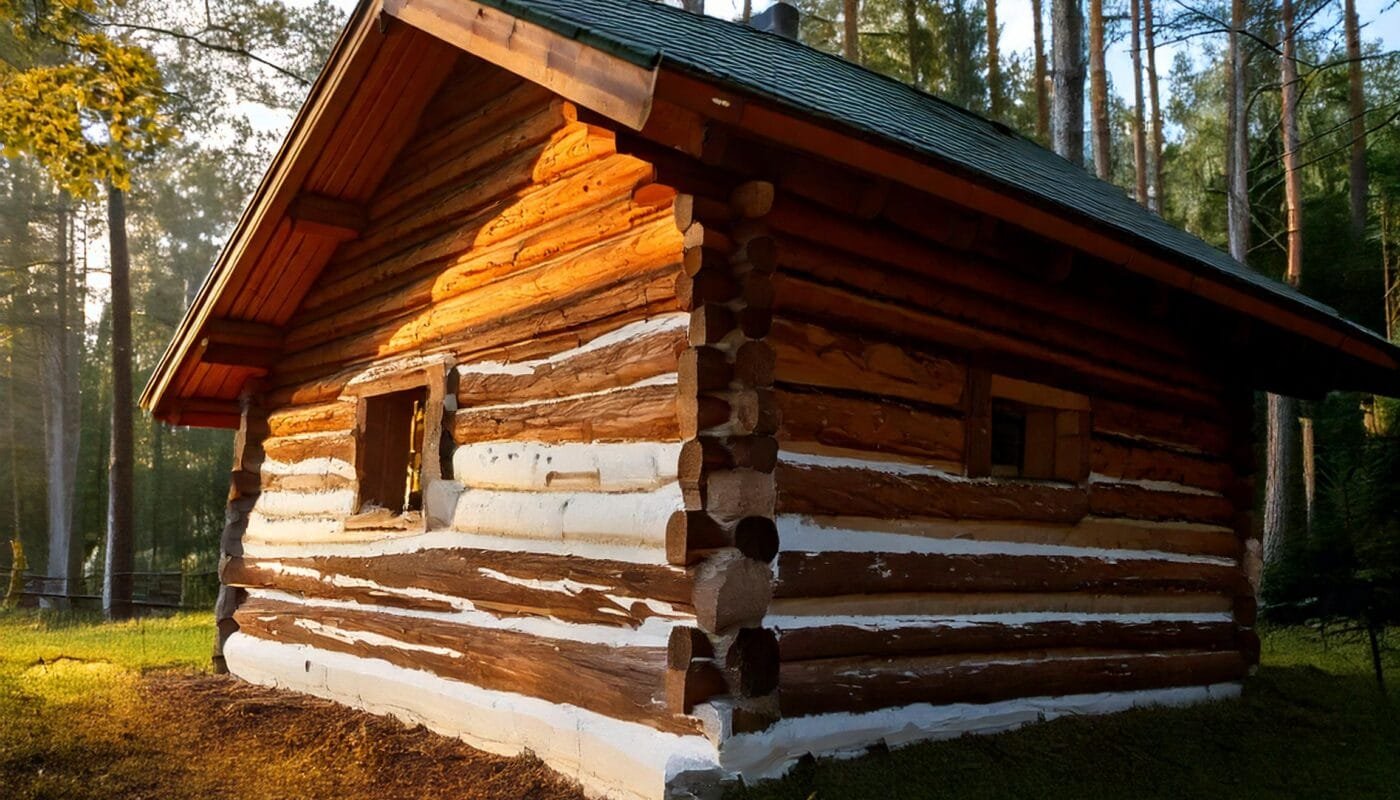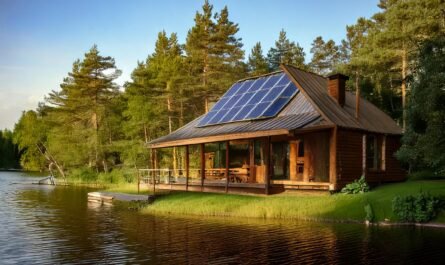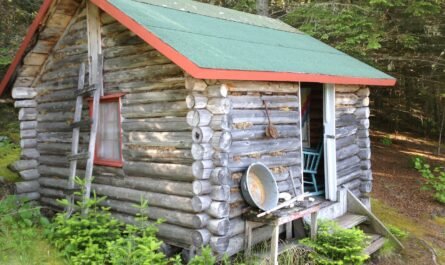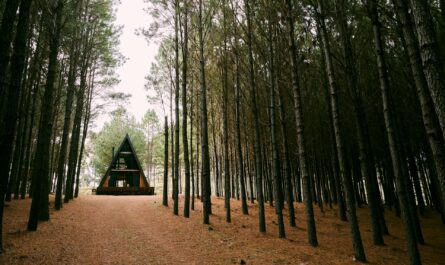Log cabins have long been cherished for their rustic beauty, natural feel, and connection to simpler times. Whether you’re a log cabin owner or an enthusiast, you’ve likely come across the term “chinking.” But what exactly is log cabin chinking, and why is it so essential? This story delves into the chinking process, highlighting the use of traditional chinking methods with handmade materials. From sealing log joints to addressing moisture intrusion, chinking plays a crucial role in maintaining the structural integrity of a log cabin. If you’re looking to preserve the charm of your traditional log cabin or tackle the unique challenges of a new log cabin, this guide offers insights, tips, and inspiration.
Table of Contents
What is Log Cabin Chinking?
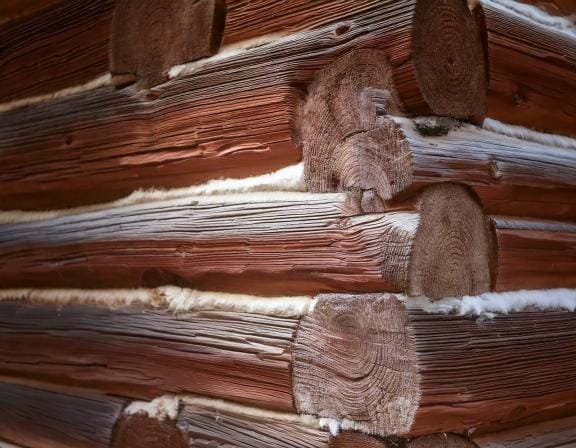
At its core, chinking serves as the material applied between log courses to fill wide gaps and prevent air leaks. Its primary purpose is to seal the log joints, ensuring protection from moisture intrusion, insect infestations, and water damage. Early builders relied on traditional materials like clay, moss, and straw to create a tight seal. These materials, though effective in their time, required frequent maintenance.
Modern innovations, such as new synthetic chinking, offer log homeowners solutions that are durable and flexible, accommodating the movement of the logs due to temperature changes. However, many builders and log cabin owners still favor handmade chinking recipes and methods for their environmental benefits and connection to traditional log cabin aesthetics.
Traditional vs. Modern Chinking Materials
The evolution of chinking materials reflects changes in the log home industry. Traditional chinking relied on natural resources like lime, sand, and clay, mixed with binders like straw or animal hair. These traditional materials were abundant and environmentally friendly, making them the best option for early log cabins. However, they were prone to cracking, leading to heat loss, water infiltration, and even significant damage.
Historical organizations, such as Foxfire strive to preserve traditional ways utilizing simple available materials. The initial installment in the Foxfire anthology series, The Foxfire Books, featured a collection of articles from the magazine centered around the skills, trades, and ways of life of the Appalachian pioneers. As of today, the series has expanded to include twelve books, along with additional companion volumes that explore a range of topics, from the process of hog scalding to the art of winemaking.
Modern options include synthetic foam, flexible sealants, and modern chinking materials like triple stretch chinking. These products often come in gallon pails or 5-gallon buckets and can be applied using tools like a chinking gun, bulk loading gun, or grout bags. These modern materials allow for different textures and various colors to match the appearance of your cabin. However, they may include toxic chemicals, which some builders aim to avoid.
Handmade Materials for Chinking Recipe
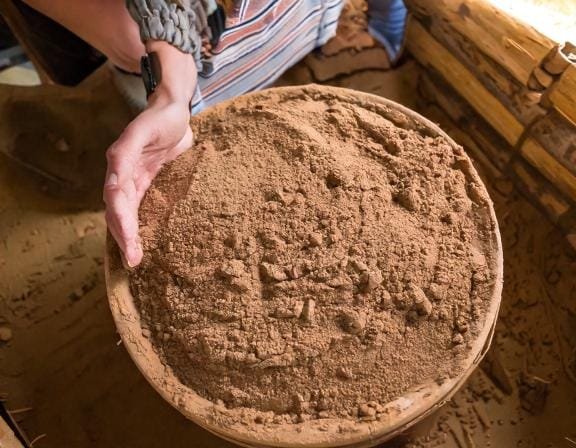
Creating handmade chinking for log cabin restoration or new builds involves sourcing the right materials and blending them for best results. A typical recipe includes:
- Clay: Provides a strong base and natural adhesion.
- Sand: Ensures a gritty texture for a firm grip strip backer rod.
- Lime: Prevents cracking and extends durability.
- Fibers: Straw, hemp, or natural fibers reinforce the mixture.
- Clean Water: Helps achieve a smooth and consistent mix.
Handmade chinking is often preferred for its authenticity, adaptability to different styles, and absence of toxic chemicals. It’s also a good idea for cabins in remote areas where quality products may not be readily available.
The Chinking Process
Applying chinking, whether handmade or modern, requires patience and skill. Here’s a step-by-step guide:
- First Step: Clean the log wall and remove any old cabins’ chinking residue. Ensure the logs are free of debris, mill glaze, and dust.
- Next Step: Insert a grip strip backer rod or bond breaker into the chink joints to prevent the chinking material from adhering to the back. This ensures two-point adhesion, which allows for flexibility as the logs move.
- Mixing the Chinking: Combine the right materials into a thick, paste-like consistency.
- Application: Using a chinking gun, foam brush, or trowel, apply the mixture evenly into the gaps. Pay attention to the size of the chinking joints and adjust the thickness as needed.
- Finishing Touches: Smooth the chinking with a damp sponge or grout bags to achieve a polished look.
- Curing: Allow the chinking to cure under stable weather conditions, avoiding direct sunlight to prevent cracking.
This process can be a learning curve, especially for first-timers, but the results are well worth the effort.
Why Handmade Chinking Is a Great Option
Handmade chinking offers several benefits for log home owners and builders:
- Energy Efficiency: Seals small cracks and prevents heat loss during cold months, reducing cooling costs.
- Aesthetic Appeal: Complements architectural details and enhances the appearance of your cabin.
- Eco-Friendly: Avoids synthetic materials and toxic chemicals.
- Adaptability: Works for different sizes of gaps and square logs.
While modern options like synthetic foam and high-quality chinking are convenient, handmade methods preserve the traditional log cabin charm that many homeowners desire.
Case Studies and Real-Life Examples
Take, for example, a couple restoring their old cabin in the Rockies. After consulting with a skilled team, they opted for handmade chinking, using clay and sand. The process allowed them to address larger gaps and restore the cabin’s structural integrity. They even matched the color of the chinking to blend seamlessly with the logs, highlighting the log profile.
Another case involved a new log cabin owner who chose a hybrid approach, combining handmade materials for visible areas and modern chinking materials for hidden joints. This balance delivered durability without compromising aesthetics.
Common Challenges and How to Overcome Them
The chinking process is not without challenges:
- Wide Gaps: Use additional grip strips or flexible sealant for reinforcement.
- Log Movement: Ensure two-point adhesion to allow flexibility as the logs shift.
- Moisture Intrusion: Address with thorough cleaning and high-quality materials to prevent water infiltration.
- Improper Chinking: Avoid rushing; uneven application leads to significant damage.
Collaborating with experienced builders or taking the time to research is crucial for achieving the best results.
Signs of Bad Chinking
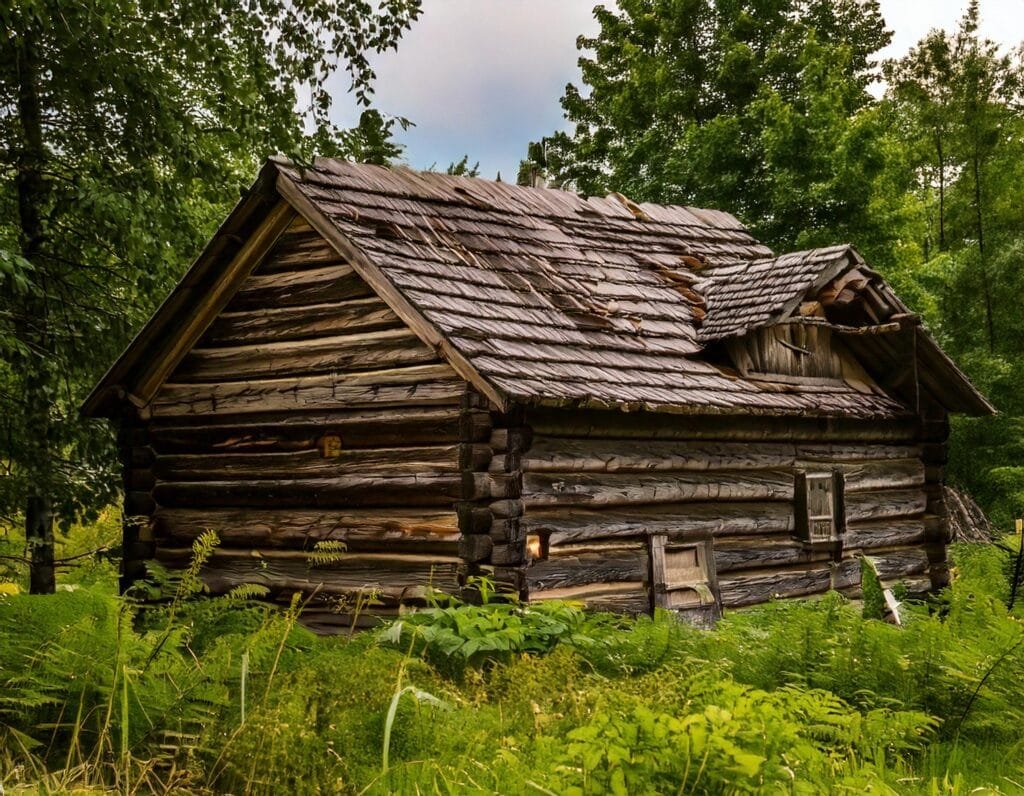
Bad chinking can undermine a log cabin’s structural integrity, energy efficiency, and appearance. Identifying the signs of failing chinking early is essential to prevent further damage and maintain the cabin’s resilience. One of the most common indicators is cracking or splitting in the chinking material. This occurs when the chinking cannot accommodate the natural movement of logs due to temperature changes. Cracks allow air and moisture to penetrate the gaps, leading to water infiltration, insect infestations, and reduced energy efficiency.
Separation from Logs
Another sign to watch for is the separation of chinking from the logs. This issue often arises when the chinking material has not adhered properly due to poor application techniques or the absence of a bond breaker or backer rod. These gaps compromise the tight seal necessary for insulation and protection against weather conditions. Similarly, a spongy or soft texture in the chinking indicates that the material may not have cured correctly or is made from poor-quality components, leaving the cabin vulnerable to water damage and pest infestations.
Discoloration
Discoloration of the chinking is another visual clue. Stains, dark spots, or mold growth can signal persistent moisture issues or exposure to direct sunlight, which can degrade both the chinking and the surrounding wood. This not only impacts the appearance of the cabin but also raises concerns about deeper structural damage. Shrinking or pulling away of the chinking material can also occur, particularly when it was not mixed or applied properly. This creates voids that further weaken the cabin’s defenses against drafts, water leaks, and heat loss.
Leaks or Drafts
Other signs of bad chinking include visible leaks, drafts, and uneven application. Improperly applied chinking might appear lumpy or uneven, with sections that are too thin or thick. This weakens its overall effectiveness and could lead to quicker deterioration. Additionally, brittleness in the chinking, where the material crumbles under touch, suggests that it has aged or been overexposed to harsh weather. This often means it has lost the flexibility required to handle the natural expansion and contraction of the logs.
Water Streaks or Damage
Water streaks running down the logs near the chinking, along with swollen wood, are red flags for failed seals. This often results in water damage and rot, endangering the cabin’s structural integrity. Pests finding their way into the gaps is another indicator of failing chinking, as they exploit poorly sealed joints. These issues are especially problematic in areas with larger gaps or older cabins where chinking has degraded over time.
To address these problems, regular inspections are critical. Small cracks or minor separations can often be repaired with touch-ups using high-quality chinking materials. For more significant issues, it may be necessary to remove the old chinking and reapply new material, ensuring proper preparation and the use of tools like a grip strip backer rod or a bond breaker. Engaging skilled professionals can also help ensure the job is done correctly, preserving the cabin’s durability and charm for years to come.
FAQs About Log Cabin Chinking
What is log cabin chinking, and why is it important?
Log cabin chinking is the material used to fill gaps between the logs of a cabin, creating a tight seal to prevent air leaks, water infiltration, and insect infestations. It plays a crucial role in maintaining the structural integrity, energy efficiency, and aesthetic appeal of the cabin. Chinking accommodates the natural movement of logs caused by temperature changes, ensuring the cabin remains durable and comfortable.
What materials are used for log cabin chinking?
Chinking materials can be traditional or modern. Traditional materials include clay, sand, lime, and natural fibers like straw, offering eco-friendly and authentic solutions. Modern materials, such as synthetic foam or triple stretch chinking, provide durability and flexibility to handle the movement of logs. The choice of materials depends on the log cabin’s style, the size of gaps, and personal preferences.
What are common signs of bad chinking, and how can they be fixed?
Signs of bad chinking include cracking, separation from logs, soft or brittle textures, discoloration, and gaps causing drafts or water leaks. To fix these issues, inspect the cabin regularly, clean damaged areas, and reapply high-quality chinking materials. Using tools like a grip strip backer rod and ensuring proper application techniques can prevent future problems and extend the life of the chinking.
Final Thoughts About What Is Log Cabin Chinking
Chinking plays a crucial role in the life of a log cabin, from maintaining its structural integrity to enhancing its appearance. While modern materials like triple stretch chinking and synthetic foam are available, the timeless appeal of handmade chinking remains unmatched. By choosing the right materials, following the proper steps, and embracing the unique challenges of log building, log homeowners can ensure their cabins stand the test of time.
Whether you’re restoring an old cabin or constructing a new log cabin, the chinking process is your gateway to a resilient and beautiful home that connects you to tradition and nature.
